I probably should have seen it coming when the Caput Mundi signs showed up last year. All over Rome, construction projects were in full swing for the 2025 Jubilee year and each site was hidden away behind a yellow tarp, declaring the city “Caput Mundi”, a Latin phrase adopted by the Roman Empire to make sure everyone understood that Rome represented “the capital of the world”. It’s antiquity’s version of Sinatra’s “New York, New York”.
But a year ago, it seemed more like wishful thinking. After all, when it comes to industry and economic might, Rome is certainly not an international hub on a level of London, New York or Hong Kong. Sure it’s one of the crossroads of the world, especially in front of the Colosseum or the Pantheon. But isn’t everyone really here to admire the glories of the past? It’s not a place you expect to see popping up regularly on your hourly newsfeed.
Well… be careful what you wish for. For reasons both sad and joyous, this has been a year when Rome finds itself back in the limelight—-and not just because Stanley Tucci or Paris’s Emily came to town. On Borgo Pio, where C and I have our apartment, there are crews of journalists with their cameras and microphones set up at the tourist trattorias. Helicopters hover amidst the circling seagulls, cuing the question: “Who’s in town today?” I’m just waiting for Caesar Augustus to show up with a motorcade of blue Alfa Romeos careening down Via del Corso.
Of course, much of Rome’s trending status is tied to a tumultuous 2025 at the Vatican. From the celebratory beginning of the Jubilee Year on Christmas Eve of last year to Pope Francis’s bout with pneumonia and then his emotional return to St. Peter’s Square on Easter Sunday, the Church was already at the center of the world stage when Francis passed away on April 21. Then the media frenzy really set in, as a Felliniesque band of priests and paparazzi from around the globe flooded into the city for the conclave, visions of Ralph Fiennes dancing in their head.
After the white smoke had cleared, it was evident that Rome had taken on a new prominence in the international order. Beyond the excitement of a new pontiff, there’ve been impromptu negotiations between Trump and Zelensky on the floor of St. Peters, world leaders jockeying for face-time at the Apostolic Palace, and talk at Palazzo Chigi of Italy acting as a “bridge” between the US and the European Union. Maybe they can settle this whole tariff thing over a spritz.
It’s a funny time to be an American in Italy, as the two cultures keep finding themselves on a path somewhere between an intersection and a collision course. It happened again last weekend— this time in the sports arena, as rising Italian tennis star Jasmine Paolini took on America’s Coco Gauff in the women’s single final at the Italian Open, held amidst the statues and mosaics of Rome’s Foro Italico. For two tennis crazy Americans living in Rome, that one was a must-see.
The disco classic “Love Is In The Air” was blaring from the public address system on Saturday afternoon as C & I made our way into the stadium, a Mussolini-era construction that takes the dictator’s imperial envy to Forum-like heights. With the cypress and pine green slope of Monte Mario as a backdrop, and the VIP seats filled with women wearing Bulgari and men all wearing the same blue suit, Rome had the buzz of a better-dressed Vegas on fight night. When the President of the Republic Sergio Mattarella, arrived, waving to the camera, the crowd broke into an unprompted cheer.
On the court, Gauff looked every bit the American— younger, bigger, harder-hitting— but Paolini was fearless, fast, and nearly flawless in her execution. From the start, it felt like she had the winds of history and the will of the crowd behind her.
By the second set, the crowd was chanting “Olé olé, olé, Jasmine, Jasmine” during any pause in the play. As Gauff’s last return popped up errantly off her racquet, there was a hush, then an eruption: the sound of history being made.
Soon the diminutive Paolini was circling the court, soaking up the excitement of the crowd and showing off the first trophy won by an Italian at that tournament in 40 years. Even the guys in the suits were celebrating, and singing along with Gabry Ponte’s made-for-these-moments anthem, “Tutta L’Italia” as it played on repeat. Love was in the air indeed.
The next day, the action moved back to the Vatican, but this time it was an American being celebrated. In a ceremony attended by more than 200,000 people including world leaders and 150 formal delegations, Cardinal Robert Francis Prevost was officially inaugurated as Pope Leo XIV. Not wanting to miss the chance to see two milestone events in one weekend, I joined the Mass for the masses, lining up along the Via della Conciliazione to catch a glimpse of the pontiff’s drive-by before the service began.
If the music choices were a bit more elevated than that of Foro Italico the night before, the spirit was almost as giddy. There were clerics and Jubilee pilgrims, politicians and police, Romans with children on their shoulders and foreigners clutching flags from far-off lands all huddled together for the passing of the popemobile. When Pope Leo rolled by on what can best be described as a white Mercedes Benz pick-up truck with a super luxe office chair in the cargo bed, he was standing not sitting, and the crowd yelled out “Evviva Papa Leone” and waved the banners they’d brought from home.
In a place where the layers of human history are stacked up like newspapers on the floor or scattered like broken columns in a field, it’s understandable that a visitor could mistake Rome as nothing more than an archive for the ages— beautiful yes, but with limited relevance to our contemporary moment. Yet the magic of Rome is that the past here always jostles shoulder to shoulder with the present. Every day there are gallery openings and theater premieres, press conferences and poetry readings. Games are won or lost. Popes pass away, and new ones rise up in their place. It may be the Eternal City, but time here does not stand still.
I confess that the heat of the day and the crush of the crowds led me to leave Pope Leo’s two hour inaugural Mass well before it reached its conclusion. But I could hear the closing hymn through my open window, mingled with the sound of sirens from Piazza Risorgimento and birdsong from the courtyard below. As the bells of St. Peter’s reverberated through the neighborhood, you could feel this great and ancient city renewing itself once again, ready to take its place at the center of the world.

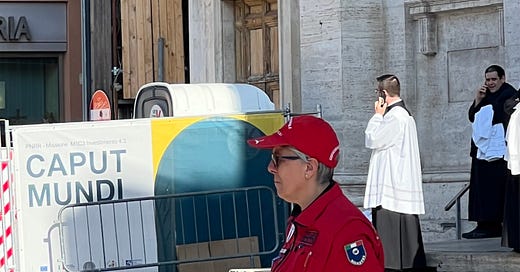



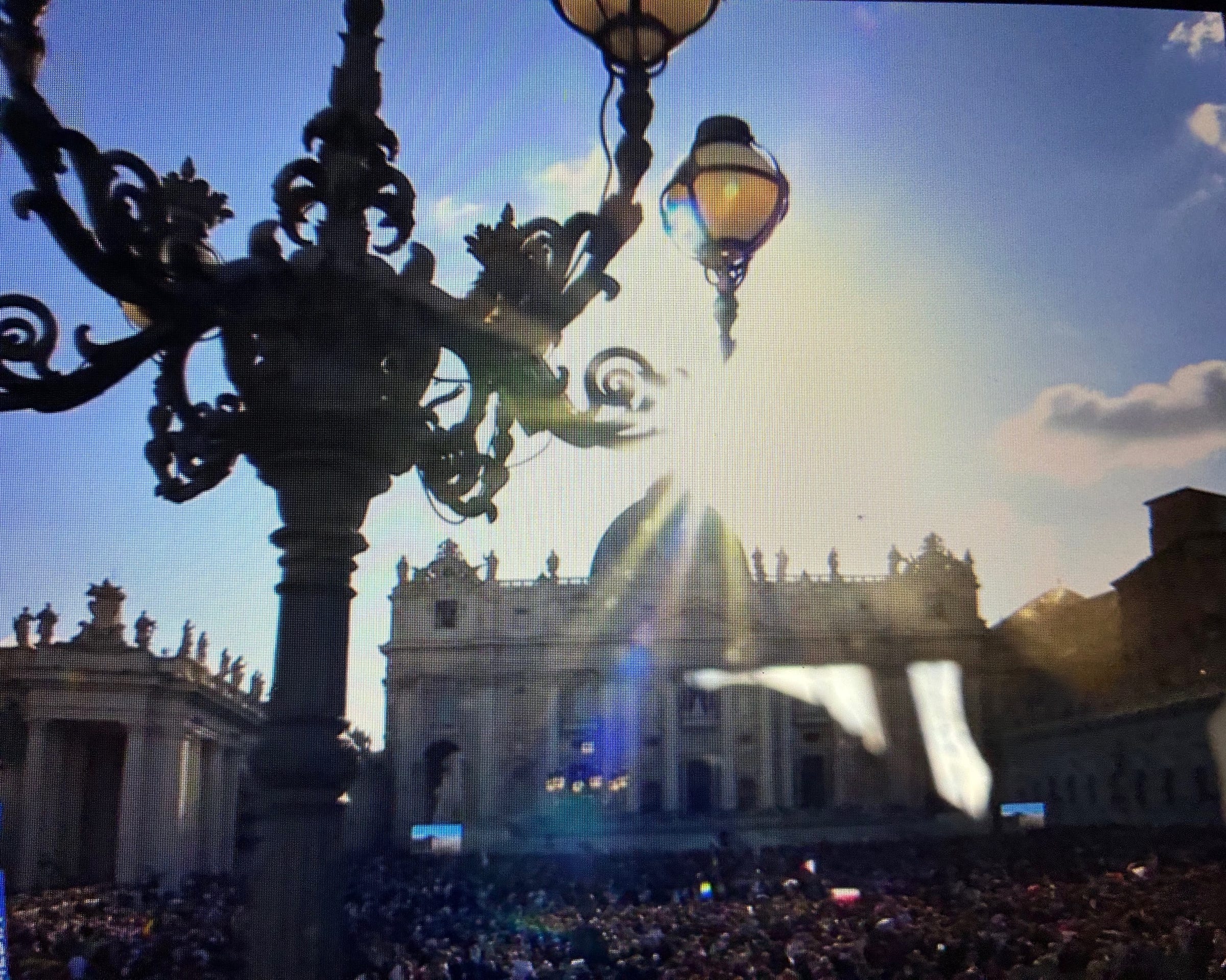
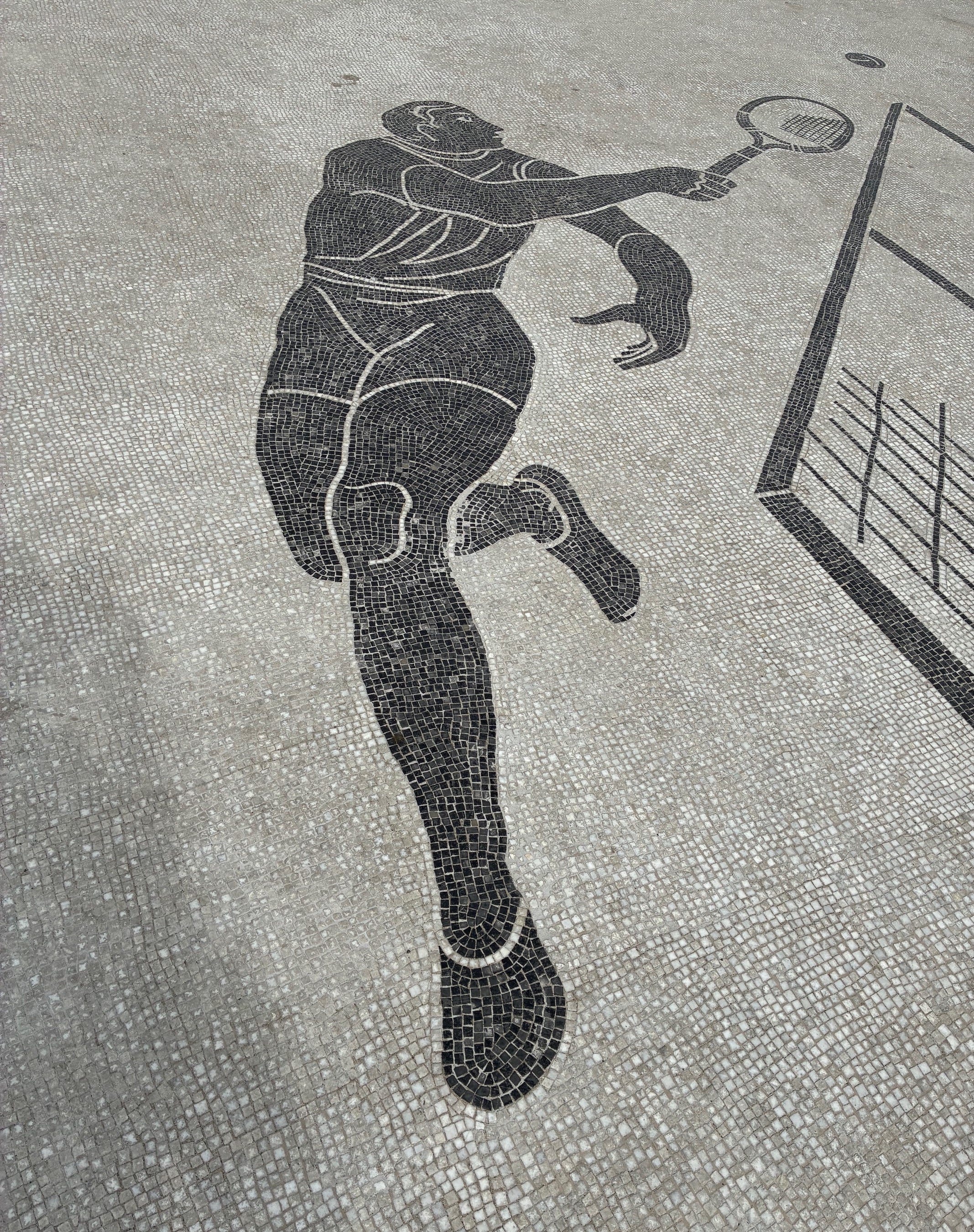
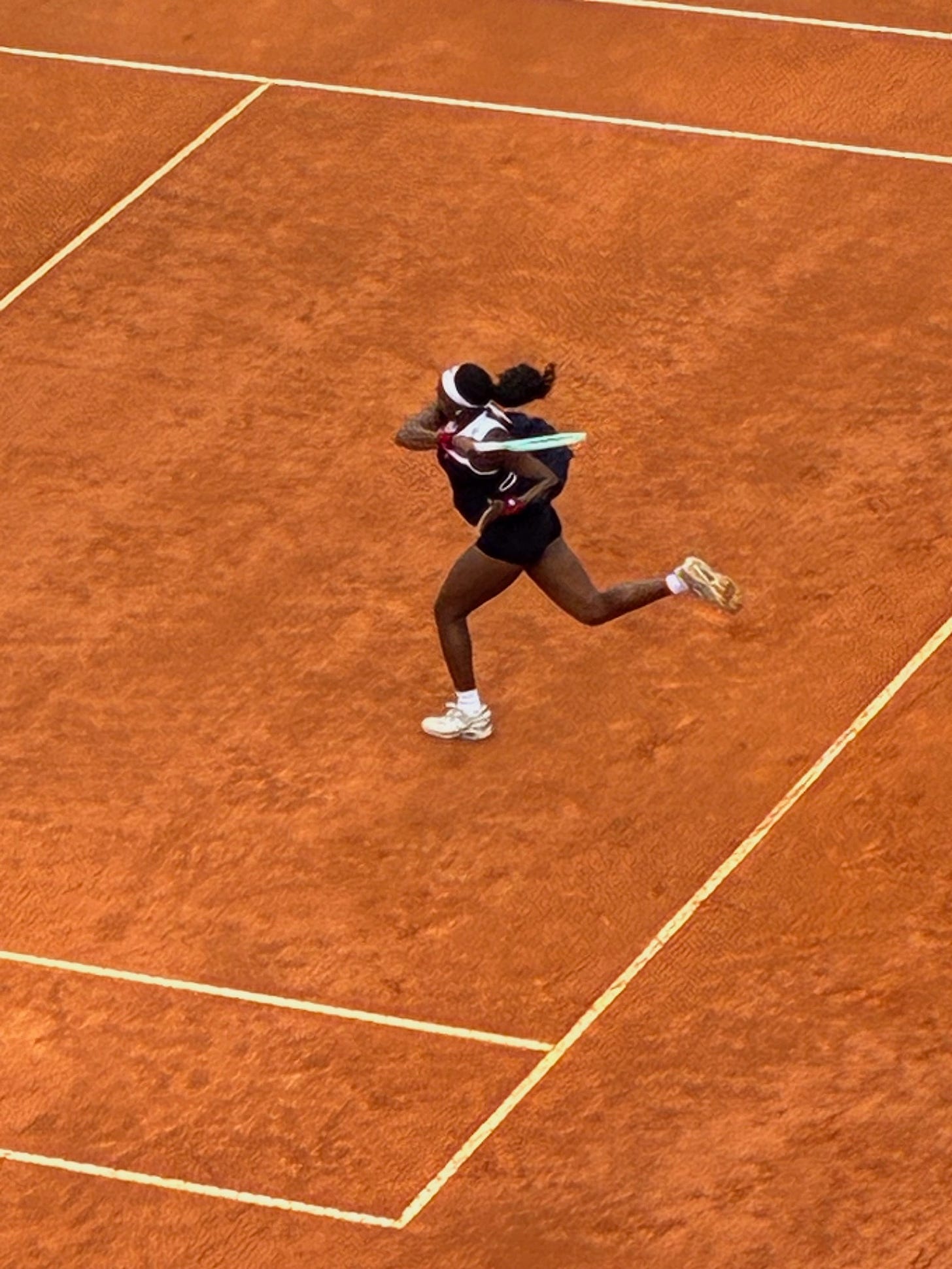
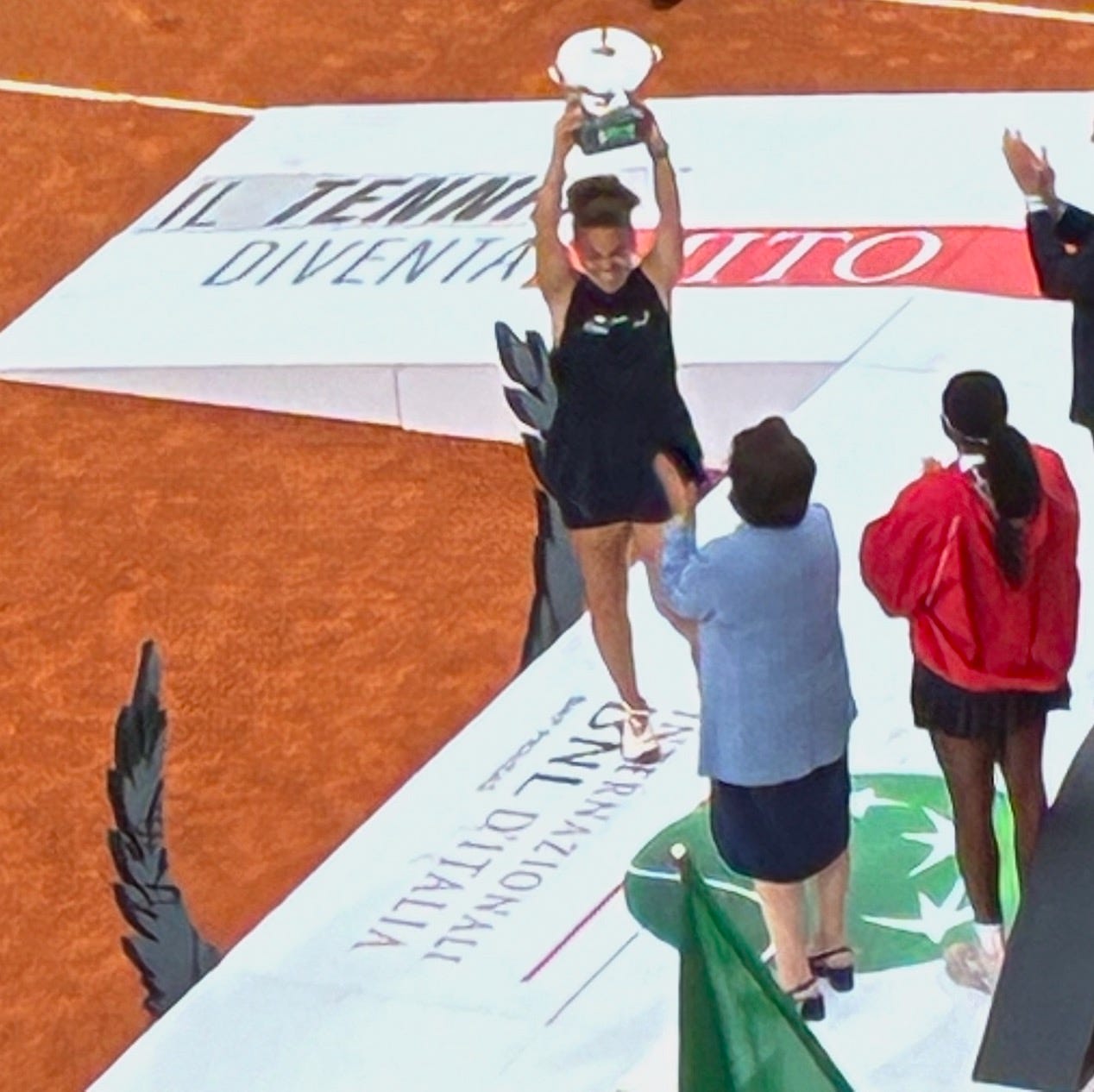


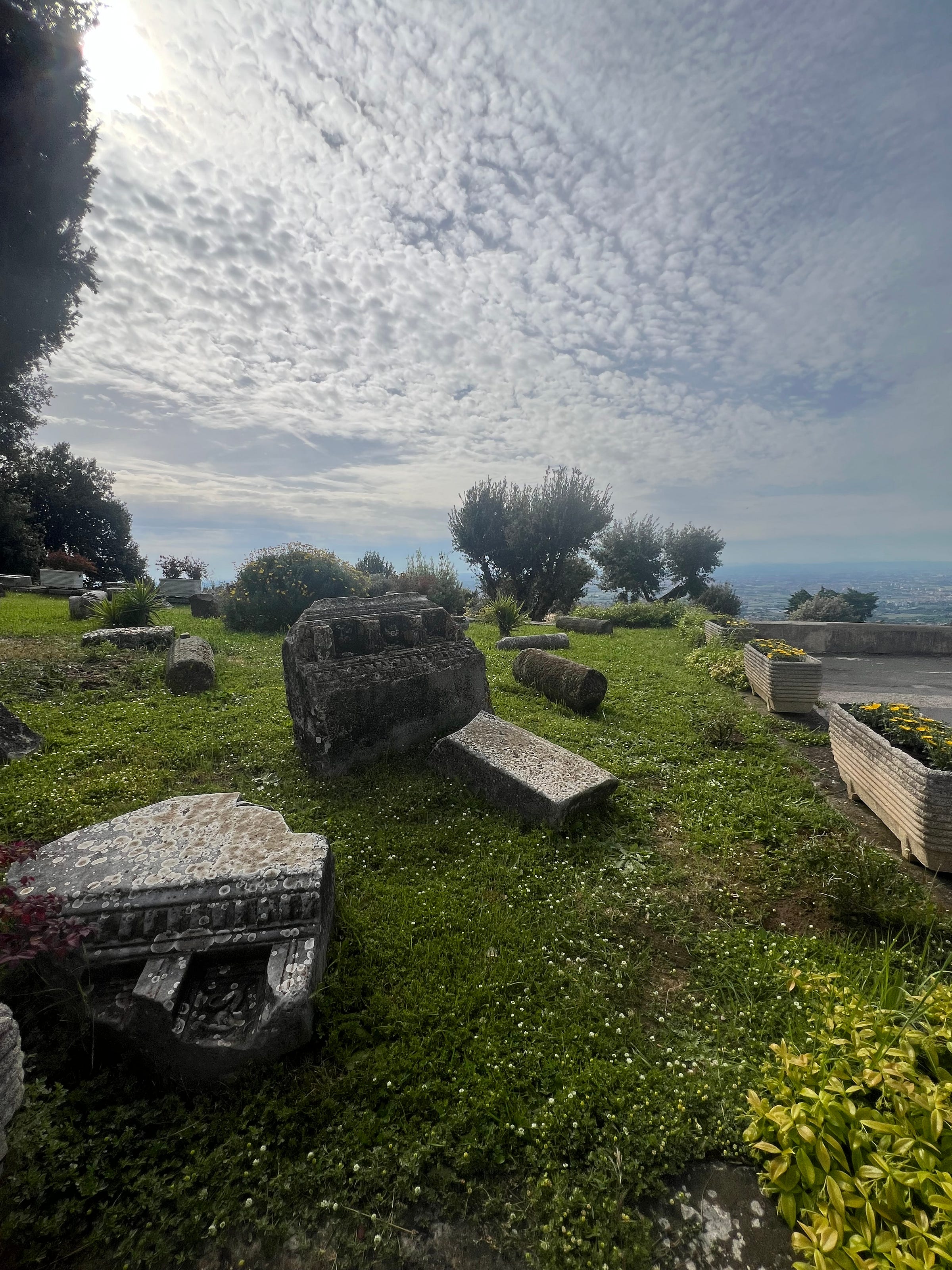
I really like Osteria Benito e Gilberto on Via Del Falco— mainly a seafood place but just off Borgo Pio on Via Del Falco. We’ve also had really good experiences at Arlu on Borgo Pio— they also have a very nice wine bar that does tastings,etc. by special arrangement. Il Matriciano which is nearby is also a good traditional Roman spot. Hope that helps!!
I loved the Dolce & Gabbana show! I have to say, I'm a bit of a cynic when it comes to these branded museum things-- feels like just a corporate attempt to cash in to me. But the designs here are so breathtakingly beautiful and eccentric and all of the other elements-- the design of the rooms, the concepts, the sound design, etc.-- are at such a high level that I was completely won over. It's pretty spectacular.